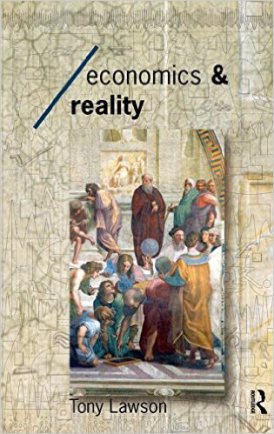Applied econometrics — a messy business The applied econometrician is like a farmer who notices that the yield is somewhat higher under the trees where birds roost, and he uses this for evidence that bird droppings increase the yield. However, when he presents his findings … another farmer … objects that he used the same data but came up with the conclusion that moderate amounts of shade increase the yields … A bright chap … then observes that these two hypotheses are indistinguishable, given the available data … The obvious response of course, albeit one that econometricians occupied with fitting a line to given sets of data rarely contemplate, is to add the ‘available data.’ Specifically, the aim must be to draw consequences for, and seek out observations on, actual phenomena which allow the causal factor responsible to be identified. If, for example, bird droppings is a relevant causal factor then we could expect higher yields wherever birds roost. Perhaps there is a telegraph wire that crosses the field which is heavily populated with roosting birds, but which provides only negligible shade … The fact that it is not possible to state categorically at this abstract level the precise conditions under which substantive theories can be selected amongst, i.e.
Topics:
Lars Pålsson Syll considers the following as important:
This could be interesting, too:
Robert Vienneau writes Austrian Capital Theory And Triple-Switching In The Corn-Tractor Model
Mike Norman writes The Accursed Tariffs — NeilW
Mike Norman writes IRS has agreed to share migrants’ tax information with ICE
Mike Norman writes Trump’s “Liberation Day”: Another PR Gag, or Global Reorientation Turning Point? — Simplicius
The applied econometrician is like a farmer who notices that the yield is somewhat higher under the trees where birds roost, and he uses this for evidence that bird droppings increase the yield. However, when he presents his findings … another farmer … objects that he used the same data but came up with the conclusion that moderate amounts of shade increase the yields … A bright chap … then observes that these two hypotheses are indistinguishable, given the available data …
 The obvious response of course, albeit one that econometricians occupied with
fitting a line to given sets of data rarely contemplate, is to add the ‘available
data.’ Specifically, the aim must be to draw consequences for, and seek out
observations on, actual phenomena which allow the causal factor responsible to
be identified. If, for example, bird droppings is a relevant causal factor then we
could expect higher yields wherever birds roost. Perhaps there is a telegraph
wire that crosses the field which is heavily populated with roosting birds, but
which provides only negligible shade … The fact that it is not possible to
state categorically at this abstract level the precise conditions under which
substantive theories can be selected amongst, i.e., without knowing the contents
of the theories themselves or the nature or context of the conditions upon which
they bear, is an unfortunate fact of all science …
The obvious response of course, albeit one that econometricians occupied with
fitting a line to given sets of data rarely contemplate, is to add the ‘available
data.’ Specifically, the aim must be to draw consequences for, and seek out
observations on, actual phenomena which allow the causal factor responsible to
be identified. If, for example, bird droppings is a relevant causal factor then we
could expect higher yields wherever birds roost. Perhaps there is a telegraph
wire that crosses the field which is heavily populated with roosting birds, but
which provides only negligible shade … The fact that it is not possible to
state categorically at this abstract level the precise conditions under which
substantive theories can be selected amongst, i.e., without knowing the contents
of the theories themselves or the nature or context of the conditions upon which
they bear, is an unfortunate fact of all science …
Science is a messy business. It requires an abundance of ingenuity, as well as patience, along with skills that may need to be developed on the job.
